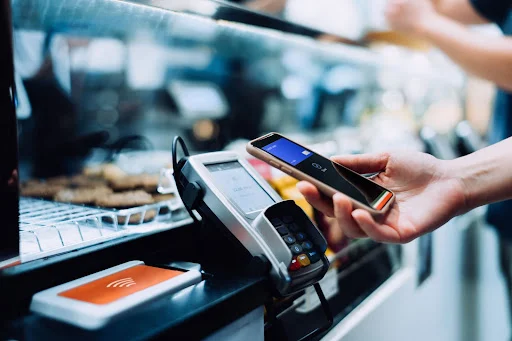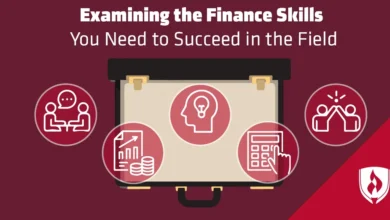NFC mobile payments have rapidly transformed the way we pay for goods and services in today’s digital world. Whether you’re tapping your phone at a coffee shop or using your smartwatch to pay at the grocery store, chances are you’re engaging with NFC technology. But what does “NFC mobile payments” really mean, and why has it become a buzzword in the world of digital finance?
This guide unpacks the meaning of NFC mobile payments, exploring how the technology works, its benefits, security features, and common applications. If you’ve ever wondered what makes tap-and-pay systems so seamless, this in-depth look into NFC technology will provide the clarity you need.
What Does NFC Stand For?
Near Field Communication (NFC)
NFC stands for Near Field Communication. It’s a short-range wireless communication technology that allows devices—such as smartphones, tablets, and smartwatches—to exchange data when they’re close together, typically within a range of 4 centimeters or less.
NFC in Mobile Payments
In mobile payments, NFC allows a user to tap or hover their mobile device over a payment terminal to complete a transaction securely and instantly. This is the core of NFC mobile payments.
How NFC Mobile Payments Work
Step-by-Step Overview
- Setup: The user adds their credit or debit card to a digital wallet app (such as Apple Pay, Google Pay, or Samsung Pay).
- Authentication: Most devices require biometric verification (fingerprint, facial recognition) or a passcode.
- Tap to Pay: The user brings their device near a contactless-enabled POS terminal.
- Transaction: The device communicates wirelessly with the terminal, sending encrypted payment data.
- Confirmation: The terminal processes the payment and displays a confirmation, usually within seconds.
Key Technologies Involved
- Secure Element (SE) or Host Card Emulation (HCE) for secure transaction data.
- Tokenization replaces sensitive card details with randomized tokens.
- EMV standards ensure global compatibility and security.
Advantages of NFC Mobile Payments
Convenience
- Fast and contactless transactions.
- No need to carry physical wallets or cards.
- Works even when offline in certain cases.
Security
- Uses tokenization to protect sensitive information.
- Two-factor authentication enhances safety.
- Transactions are encrypted end-to-end.
Hygiene and Safety
- Minimizes contact, which became especially important during the COVID-19 pandemic.
Compatibility
- Accepted at millions of POS systems worldwide.
- Supported by major mobile wallet platforms and banks.
Common Platforms Supporting NFC Payments
Apple Pay
Apple Pay is Apple’s proprietary mobile payment solution that uses NFC for contactless transactions on iPhones, iPads, Apple Watches, and Macs.
Google Pay
Previously known as Android Pay, Google Pay supports contactless payments on most Android devices equipped with NFC chips.
Samsung Pay
Samsung Pay supports both NFC and Magnetic Secure Transmission (MST), although newer models are moving toward NFC exclusively.
Use Cases of NFC Mobile Payments
Retail & Grocery
Tap-and-pay at checkout lines is increasingly common in stores like Walmart, Target, and Trader Joe’s.
Public Transportation
Many cities now accept NFC payments directly from mobile wallets for bus, train, and subway fares.
Restaurants & Cafés
Popular chains like Starbucks and McDonald’s allow payments using Apple Pay and Google Pay.
Peer-to-Peer Payments
Some platforms integrate NFC to allow device-to-device money transfers with a simple tap.
Security Features in NFC Mobile Payments
Tokenization
- Replaces your actual card number with a temporary code.
- This code is unique to each transaction and useless if intercepted.
Biometric Authentication
- Fingerprint or facial recognition adds an additional security layer.
Encrypted Communication
- NFC data is securely encrypted to prevent unauthorized access.
Dynamic CVV
- For many NFC transactions, a dynamic CVV (Card Verification Value) is used instead of the static one on the card.
Misconceptions About NFC Payments
NFC Is Not the Same as Bluetooth
While both are wireless technologies, NFC is designed for very short-range, secure communication, making it ideal for payments.
It’s Not Just for Phones
Wearables like smartwatches and fitness bands also support NFC mobile payments.
Offline Transactions Are Possible
Some wallets allow a limited number of offline NFC transactions, which are synced when the device reconnects to the internet.
Frequently Asked Questions (FAQs)
Are NFC Mobile Payments Safe?
Yes. Thanks to encryption, tokenization, and user authentication, NFC transactions are generally safer than magnetic stripe card payments.
Do All Phones Support NFC Payments?
No. Your phone must have an NFC chip and be compatible with a mobile wallet app. Most modern smartphones do.
What Happens If I Lose My Phone?
You can remotely lock or erase your device using services like Find My iPhone or Find My Device. NFC wallets also require biometric or passcode authentication, preventing unauthorized use.
Is NFC the Future of Payments?
Given the growth in mobile wallet usage, especially among younger demographics, NFC is poised to become a dominant payment method in the coming years.
Conclusion
Understanding the nfc mobile payments meaning is crucial in today’s increasingly cashless economy. With its blend of convenience, speed, and security, NFC technology is redefining how we pay—from everyday shopping to commuting and beyond.
Whether you’re just getting started with digital wallets or looking to optimize your payment methods, embracing NFC mobile payments can offer a seamless, efficient experience.
Are you already using NFC to pay? Share your experiences or check out our guide on setting up Apple Pay and Google Pay to get started today!




